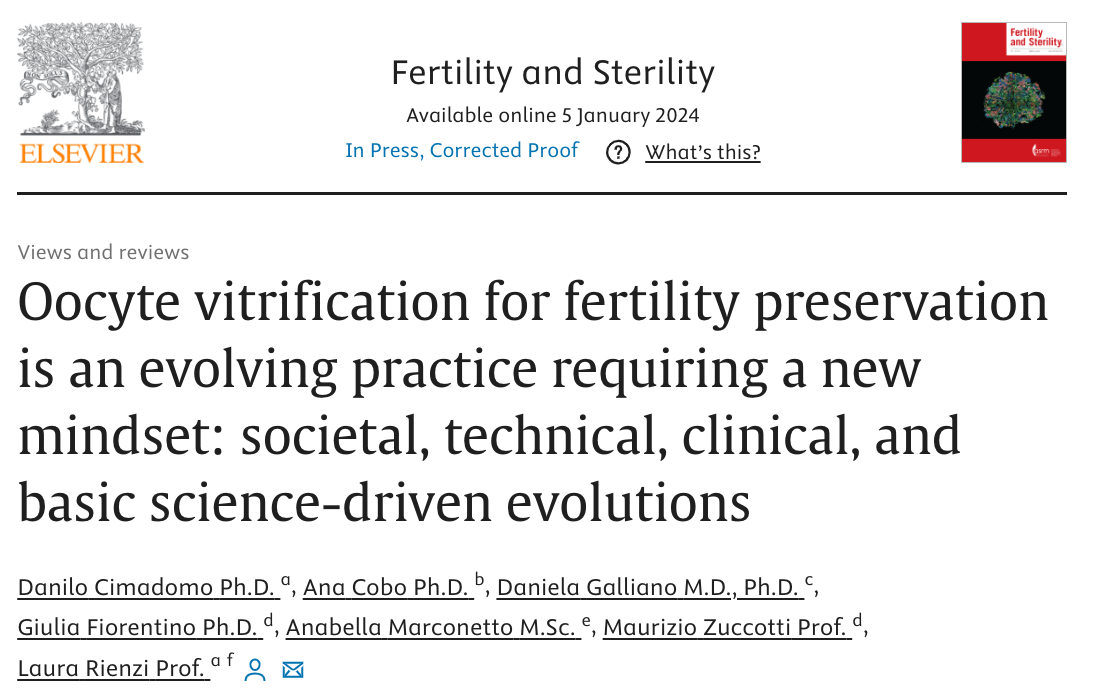
Danilo Cimadomo, Ana, Daniela Galliano, Giulia Fiorentino, Anabella Marconetto, Maurizio Zuccotti, and Laura Rienzi
Fertility and Sterility https://doi.org/10.1016/j.fertnstert.2024.01.003 – Received January 3, 2024; accepted January 3, 2024. Available online 5 January 2024
Abstract
Infertility is a condition with profound social implications. Indeed, it is not surprising that evolutions in both medicine and society affect the way in vitro fertilization is practiced. The keywords in modern medicine are the four principles, which implicitly involve a constant update of our knowledge and our technologies to fulfill the “prediction” and “personalization” tasks, and a continuous reshaping of our mindset in view of all relevant societal changes to fulfill the “prevention” and “participation” tasks. A worldwide aging population whose life priorities are changing requires that we invest in fertility education, spreading actionable information to allow women and men to make meaningful reproductive choices. Fertility preservation for both medical and non medical reasons is still very much overlooked in many countries worldwide, demanding a comprehensive update of our approach, starting from academia and in vitro fertilization laboratories, passing through medical offices, and reaching out to social media. Reproduction medicine should evolve from being a clinical practice to treat a condition to being a holistic approach to guarantee patients’ reproductive health and well-being. Oocyte vitrification for fertility preservation is the perfect use case for this transition. This tool is acquiring a new identity to comply with novel indications and social needs, persisting technical challenges, brand-new clinical technologies, and novel revolutions coming from academia. This “views and reviews” piece aims at outlining the advancement of oocyte vitrification from all these tightly connected perspectives.
